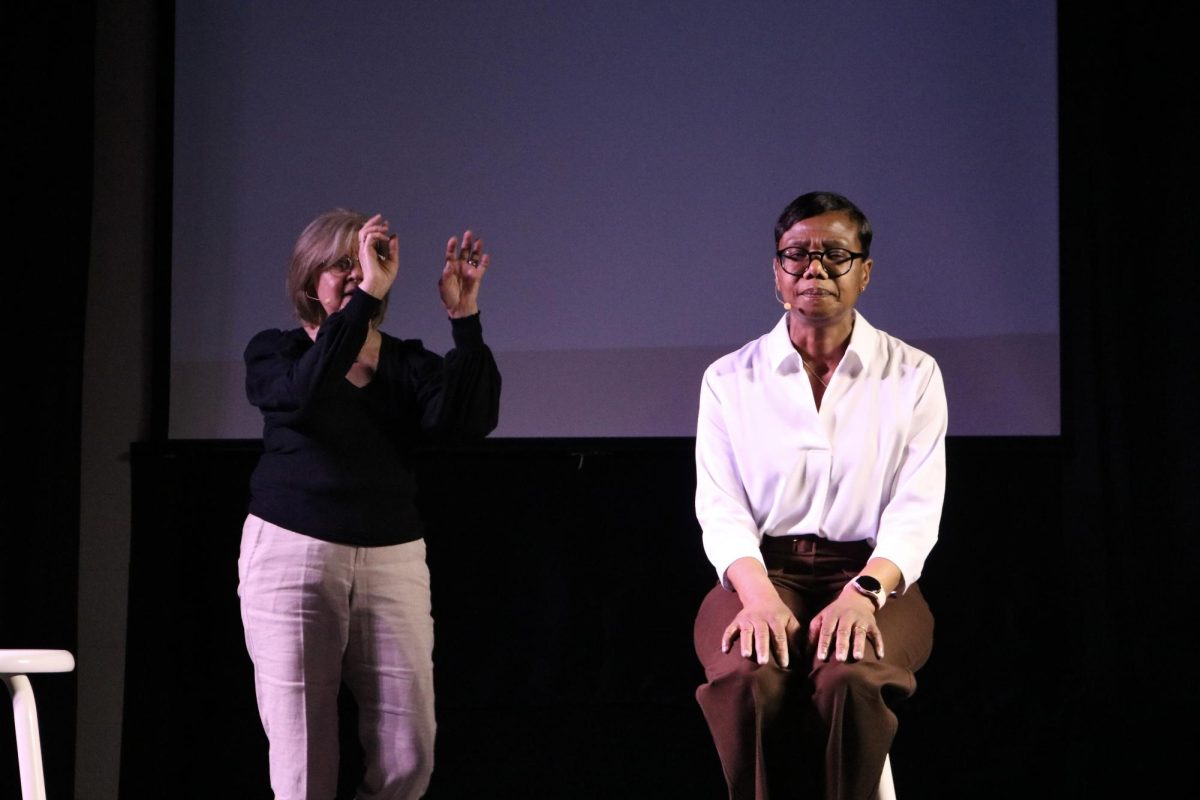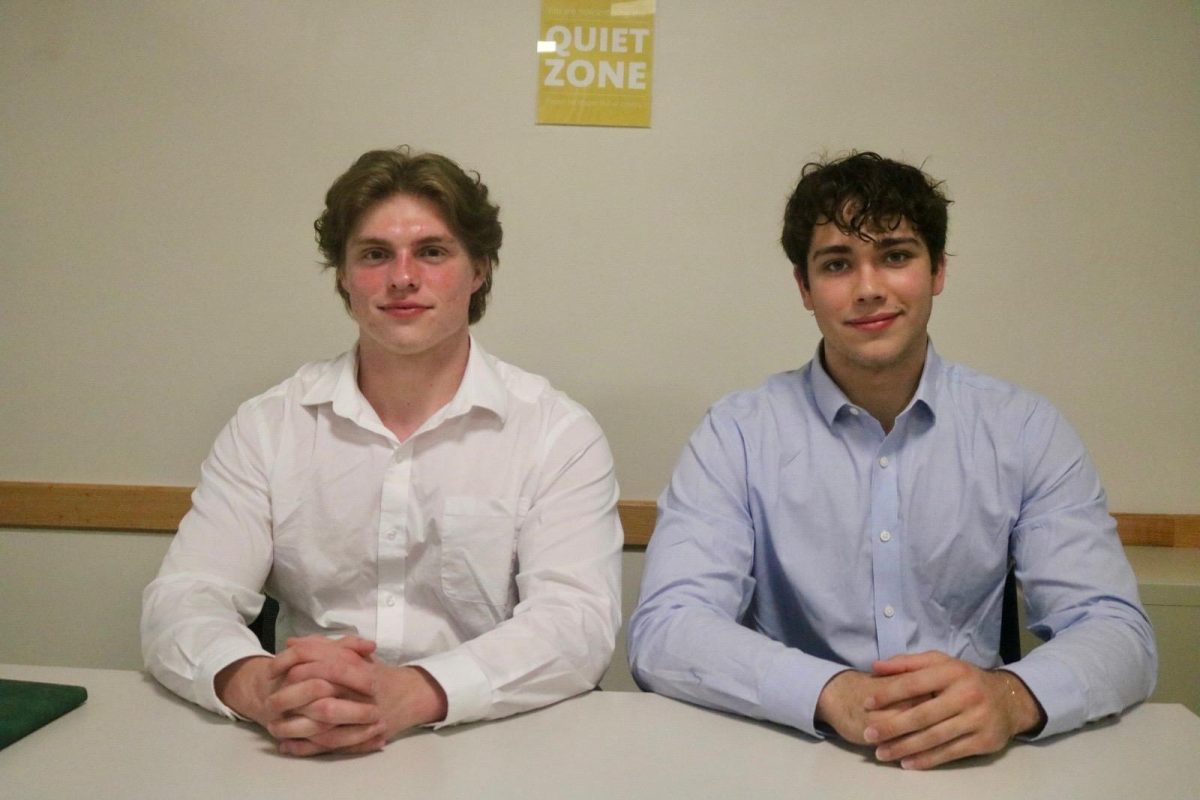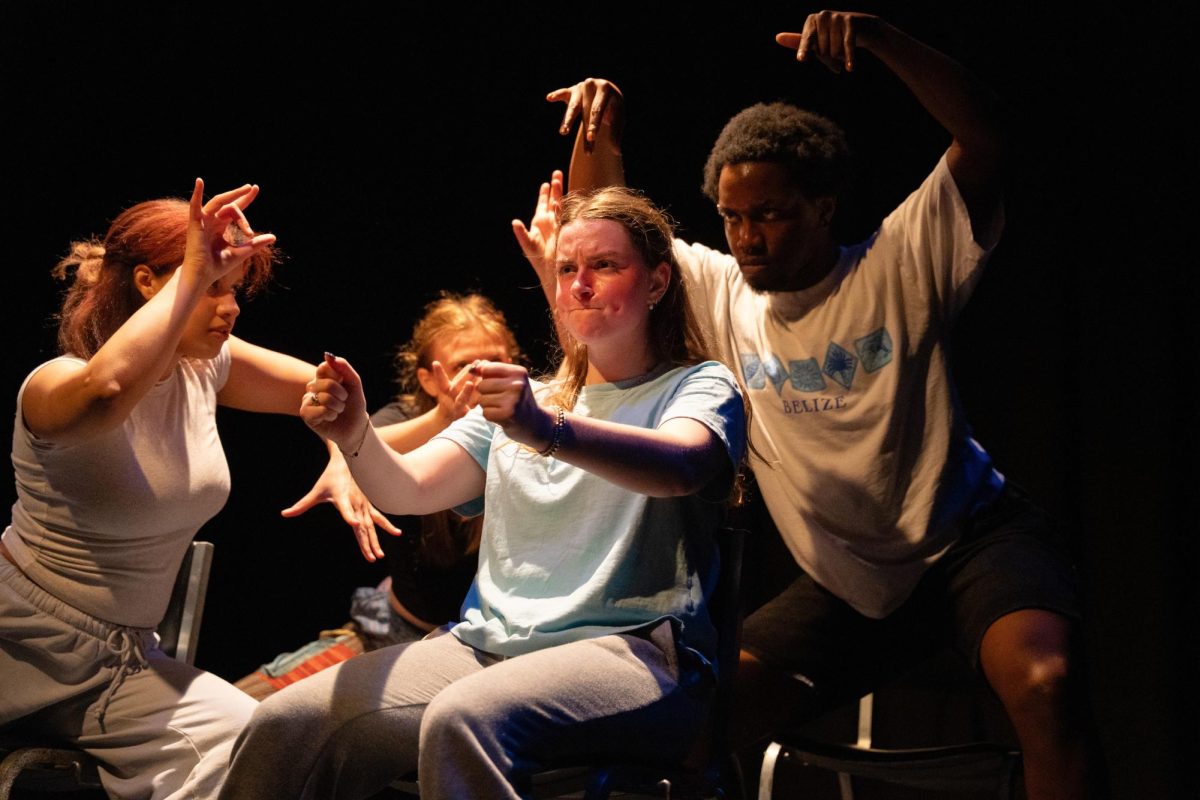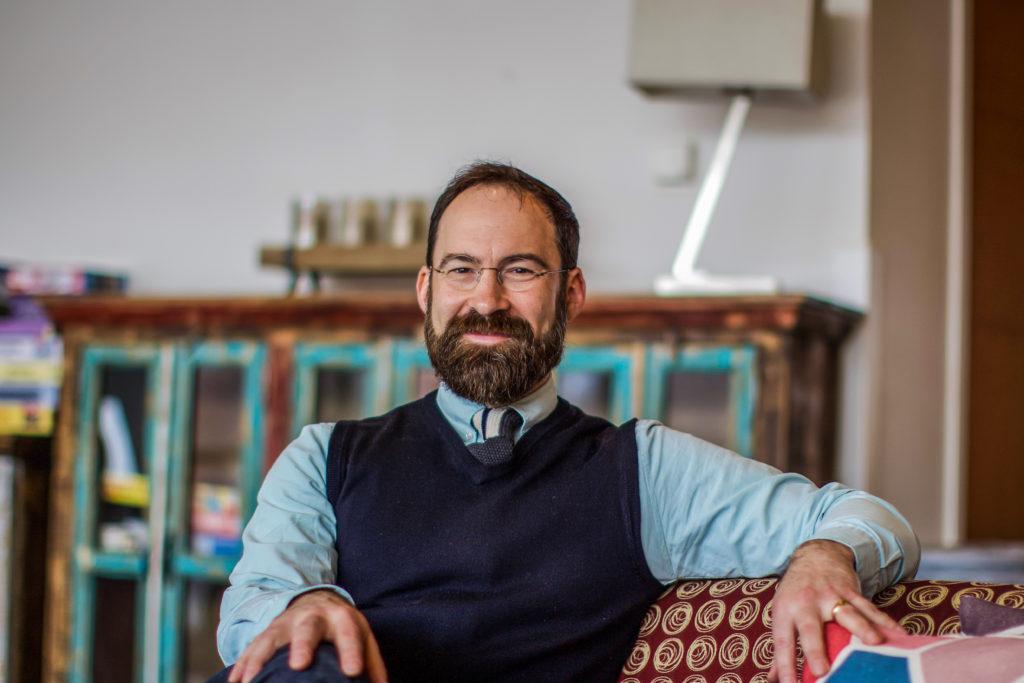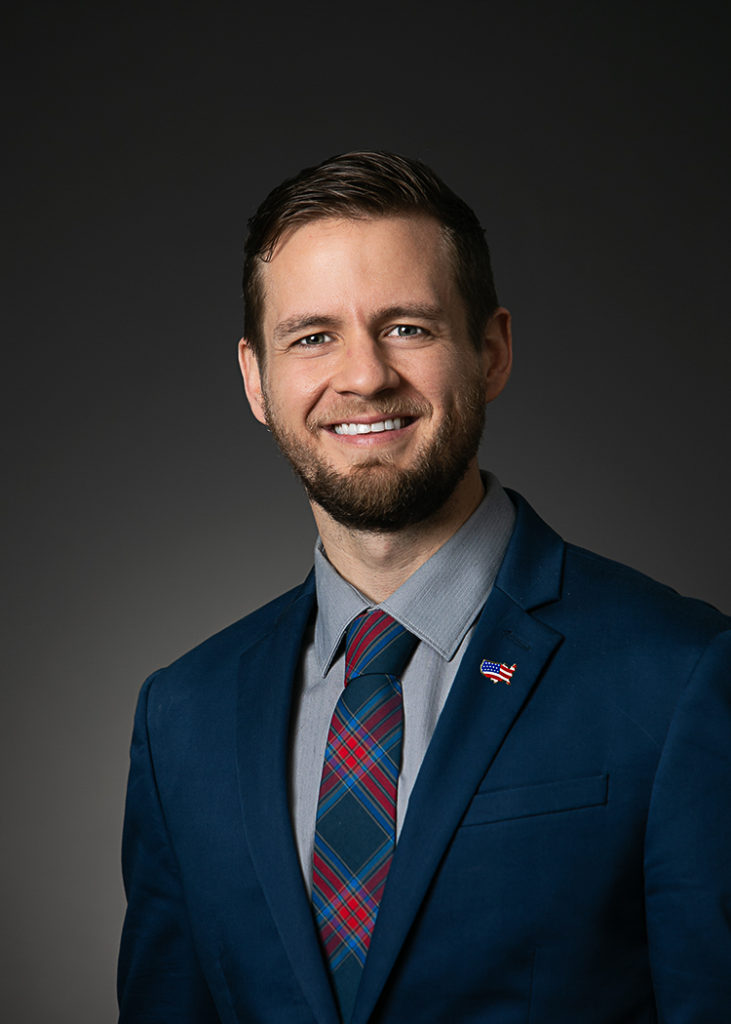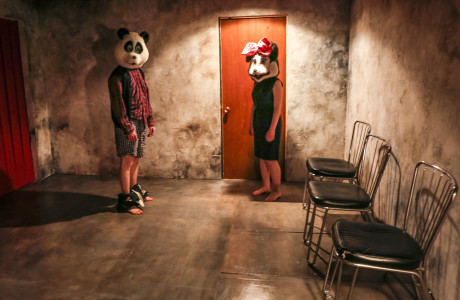
What happens when eight actors perform for an audience of one person 64 times in a week? This is one of the questions posed by Professor Craig Quintero, Theatre and Dance, explores in his new show, “Nobody Gets Hurt,” in which six central characters perform in a 12 minute show for one audience member at a time.
“You can’t lie,” Quintero said. “For these performances, because you’re so close, you really have to be present in the moment. You have to fully invest, you can’t lie.”
It’s not the first time Quintero’s theater company has performed for an audience of one. The first rendition of the show was performed for the public 28 times in a hotel in Taipei. Since the success of “Nobody Gets Hurt” abroad, Quintero decided to bring the show to Grinnell.
Once the production was underway, community and college members who were interested in seeing the show entered their names in a lottery system in hopes of winning one of the highly coveted 64 tickets.
“Nobody Gets Hurt” exceeds the boundaries of theatrical productions that have previously been showcased at the College, so Quintero looked for actors who were able to get out of their comfort zones.
“I was looking for actors who were willing to not act, and that seems like a paradox, but to just be and do and perform,” Quintero said. “Here, there really are no roles. The actors are themselves on stage. They’re doing prescribed sets of actions, but they’re not hiding behind a character. It’s them on stage.”
When Quintero began the audition process for the show, he already had an idea for the set but had not yet developed a script for the show. The show evolved further once the actors were cast and the crew began to develop a script. But the beauty of “Nobody Gets Hurt” also lies in its constant evolution and the transformation it underwent even after several performances.
“Last night, we tried to alter one of the scenes but the idea didn’t work so well. But it’s constantly growing and that’s what’s exciting about devised work,” Quintero said. “It’s not a static piece, which will be the same at the end than at opening night. It’s always evolving.”
Audience member Geneva Guadalupe ’17 was surprised by the show’s uniquely interactive nature.
“I’ve seen many different types of theater, but this was the first time that I’ve experienced a show as the only audience member. I really like the fact that not only was I watching the performance, but … that the show was an interactive experience,” Guadalupe said.
The magic behind the show can be partly attributed to the incredibly complex set built by Erik Sanning, the technical director. In just four and a half weeks, Sanning was able to revolutionize Flanagan Theatre with his set, which included a moving floor and a revolving set.
Quintero praised “his willingness to challenge himself, to answer seemingly impossible questions, and [to] always remain in a positive attitude where it’s always, ‘Yes.’”
“I’m constantly throwing him curveballs and he’s catching them and throwing them back and it’s really remarkable,” he said.
The set also functions to provide a sense of consistency by connecting the beginning and the ending segments of the play, when the audience member passes through a painting and exits onto a yellow hallway, reminiscent of the initial hallway one enters at the beginning of the show.
“When you exit, you’re outside. I think that being thrust into the cold, it was just being thrust back into the real world after being in this poetic space for 12 minutes. It hopefully shifts that world or our relationship with it,” Quintero said. “I like the sense of the familiar being altered.”





